Click image for BBB rating
See our Privacy Policy
cool="cool" width="788" height="7443" border="0" cellpadding="0" cellspacing="0" gridx="16" showgridx="showgridx" usegridx="usegridx" gridy="16" showgridy="showgridy" usegridy="usegridy" bgcolor="#99ccff">
|
|
|
 |
|
|
|
|
|
|
|
Welcome to Spaightwood Galleries, Inc.
120 Main Street, Upton MA 01568-6193
George Grosz (German, 1893-1958): Ecce Homo black-and-white lithographs 6
Click here for biographical introduction
|
|
|
|
|
Perhaps the most famous of Grosz's collections is Ecce Homo (Berlin: Malik Verlag, 1923). The title echoes Pilate's presentation of Jesus as King of the Jews, beaten, with a crown of thorns, bloody and ready for crucifixion, and clearly not the Messiah he had been proclaimed to be six days earlier when he was greeted by rapturous crowds. Just so, the image of the heroic German, brave in war and moral in peacetime, took such a beating in Grosz's drawings, watercolors, and paintings, that he was prosecuted for "offences against public morality and for besmirching the values of the German people" (Kranzfelder, 59). Ecce Homo was found to be a slanderous attack upon the army, which won damages and the removal of 5 color plates and 17 black and white plates from the portfolio in a law suit. Grosz was also fined 6000 marks. Since Grosz had been attacking the Nazis since the early 1920s and since he had singled out Hitler in particular, it is not surprising that after the Nazi's took power in Germany, his works were singled out for ridicule and destruction. 285 of his works were removed from German collections and destroyed and the 1937 Munich Exhibition of Nazi-labelled "Degenerate Art" included five of his paintings, two watercolors, and thirteen drawings (Kranzfelder, p. 86). After relocating to the U.S., Grosz wrote to J. B. Neuman concerning his own place in the history of art: "My drawings will naturally stay true–they are fireproof. They will later be seen as Goya's work [is]. They are not documents of the class struggle, but eternally living documents of human stupidity and brutality" (Hess, p. 240).
According to Dückers, the portfolios were printed in December 1922 and published in January 1923. The publisher offered purchasers 5 separate options:
Ausgabe A / Deluxe Edition A: numbers I-L containing 16 lithographs after watercolors and 84 lithographs loose in a silk portfolio, each print hand-signed by the artist.
Ausgabe B 1 / Deluxe Edition B 1: , numbers 1-100 containing just the 16 lithographs after watercolors, loose in a half-vellum portfolio, each print hand-signed by the artist.
Ausgabe B 2 / Edition B 2: the same as edition B 1, except unsigned in a handmade board binding;
Ausgabe C / Edition C: the same as edition A, except unsigned in a handmade board binding, edition size c. 6000-8000;
Ausgabe D / Edition D: just the 84 lithographs unsigned in a chromo board binding.
The total edition was about 10,000 printed, but given the Nazis approach to Grosz' works, the likelihood that most of the portfolios survived the Nazi regime is quite small. In 1965, Brussel and Brussel reproduced Edition C on smaller-sized paper in a bound book and in 1966 Grove Press followed suite, again in a reduced size edition. We have a copy of the Grove Press version (with introduction by Henry Miller), and it seems fairly clear that they found an impression of Edition C, produced an edition based upon offset lithographic reproductions of the plates. If one puts the color plates from the 1922 edition next to their counterparts from the 1966 Grove Press edition, the differences are blindingly obvious: the colors in the 1922 edition are rich and intense; the colors in the reprint are flat and dull. All of the works we have available are from a disbound example of Edition C.
Selected Bibliography: Alexander Dückers, George Grosz: Das druckgraphische Werk (Berlin: Propyläen Verlag, 1979); there is also an edition with an English translation published by Alan Wofsy Fine Arts in San Francisco in 1966, from which we will cite: George Grosz: Das druckgraphische Werk / The Graphic Work; Bruce Davis, German Expressionist Prints and Drawings: The Robert Gore Rifkind Center for German Expressionist Studies. Volume 2: Catalogue of the Collection (Prestel: Los Angeles County Museum of Art, 1989); M. Kay Flavell, George Grosz: A Biography (New Haven: Yale University Press, 1988); Frank Gettings, George Grosz - The Hirshhorn Museum and Sculpture Garden Collection ( Washington DC: Smithsonian, 1978); George Grosz, A Small Yes and a Big No: The Autobiography of George Grosz (London: Allison & Busby, 1982); Hans Hess, George Grosz (New York: Macmillan 1972); Ivo Kranzfelder, George Grosz: 1893-1959 (Köln: Benedikt Taschen, 1994); Hedy B. Landman, Theatrical Drawings and Watercolors by George Grosz (Cambridge: Harvard University, 1973); Beth Irwin Lewis, George Grosz: Art and Politics in the Weimar Republic (Madison: University of Wisconsin Press, 1971); Barbara McCloskey, George Grosz and the Communist Party (Princeton: Princeton University Press, 1997); Serge Sabarsky, George Grosz: The Berlin Years (NY: Rizzoli, 1985); Uwe M. Schneede, George Grosz: His life and work (London: The Solomon R. Guggenheim Museum, 1979); Peter Selz, German Expressionist Painting (Berkeley: University of California Press, 1957; 1974).
|
|
|
|
|
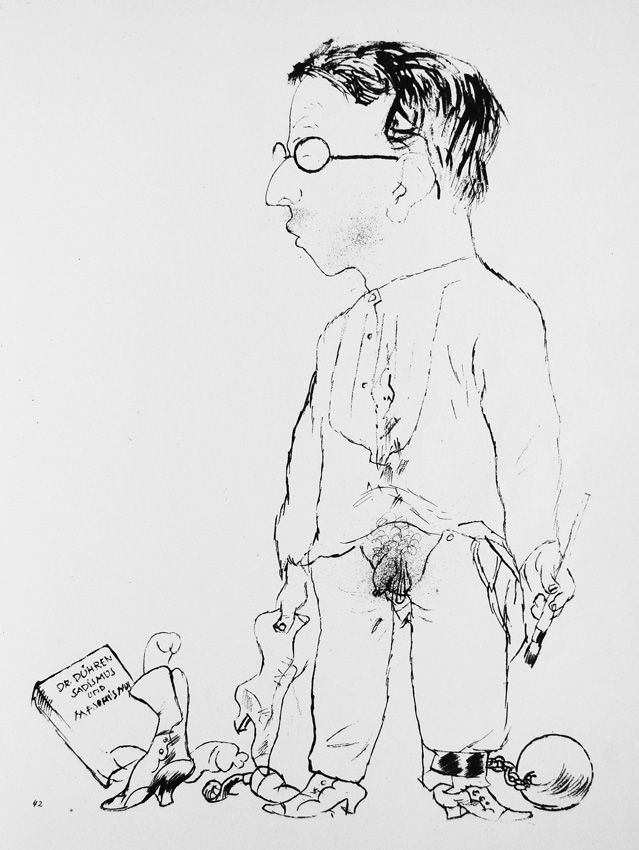 |
|
|
|
Rudi S. (Duckers S1-42, Davis-Rifkind 952: 42). Offset lithograph for Ecce Homo, 1920/21. Our impression from the unsigned Ausgabe C of the first edition of Ecce Homo (Berlin, 1923). The portfolio was stapled into a handmade board binding. When the pages were turned, they ran into this binding and an indention was created in the margin of the first 20+ lithographs. In almost all cases, this mark is not visible in the works as matted; where it is, we will mention it in the descriptions of the individual pieces. The color works were printed on heavier paper and the indentions are not only much less visible but always outside the visible area as matted. "Rudi S" is a portrait of Grosz's friend and collaborator, Rudolf Schlichter (1890-1965). Georg Grosz's 1929 painting of him at work in his studio is reproduced in Bertrand Lorquin, Annette Vogel, and Hans Wilderotter, Allemagne, les année noires (Paris: Galliard, 2007), an exhibition catalogue that accompanied a show of the works of Otto Dix, Max Beckmann, Georg Grosz, and Ludwig Meidner at the Musée Maillol in Paris. Schlichter was also a close friend of Bertolt Brecht (whose portrait he painted), Kurt Weill, and Lotte Lenya. He was imprisoned by the Nazis for ridiculing them in a large painting. After his release, he painted an even larger attack upon the regime. The book lower left, titled DR. DÜHREN / SADISMUS UND MASOCHISMUS," perhaps suggests his inspiration. Image size: 278x203mm. Price: Please call or email for current pricing information.
|
|
|
|
|
|
|
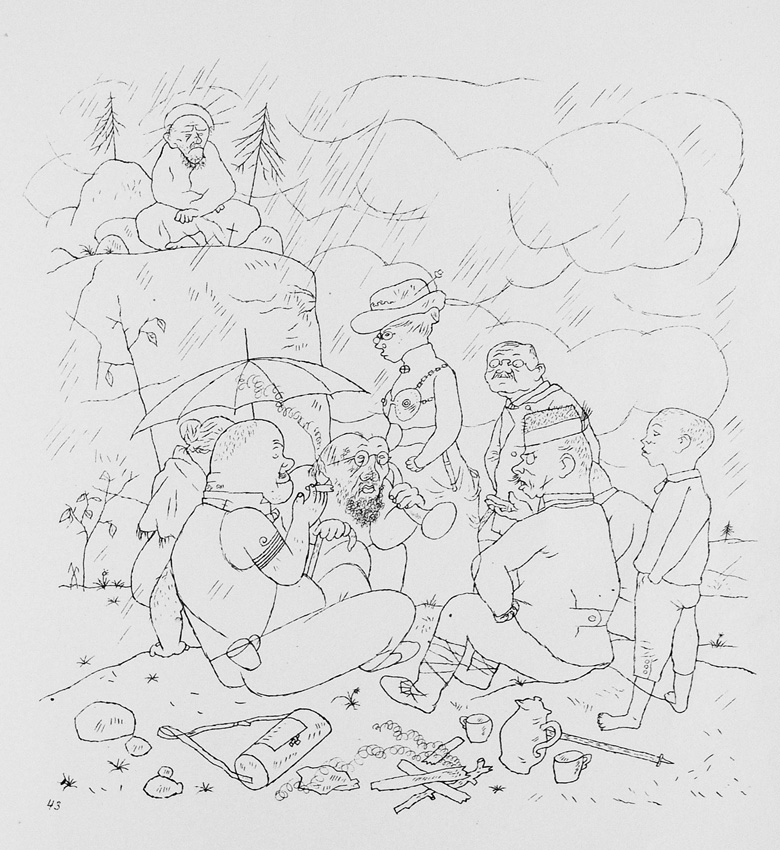 |
|
Germanentag / Teutonic Celebration (Duckers S1-43, Davis-Rifkind 952: 43). Offset lithograph for Ecce Homo, 1921. Our impression is from the unsigned Ausgabe C of the first edition of Ecce Homo (Berlin, 1923). Illustrated in the 1966 Grove reprint of Ecce Homo under the title Day of the Teutons and illustrated in Hess (plate 96) as Teutonic Day. In a work more comic than savage, Grosz offers us the spectacle of a group re-enacting the "old ways" of days gone by: under the unhappy eyes of a haloed saint, a family picnic is being drenched by a cloudburst. An elderly woman wisely huddles under a hat while her husband struggles to hear using an old ear trumpet; in the foreground, a behatted woman wearing antique breast plates looks unhappy, a Tyrolean-hatted man in antique leg wrappings argues with a brutal looking man smoking a cigar. Image size: 202x196mm. Price: Please call or email for current pricing information.
|
|
|
|
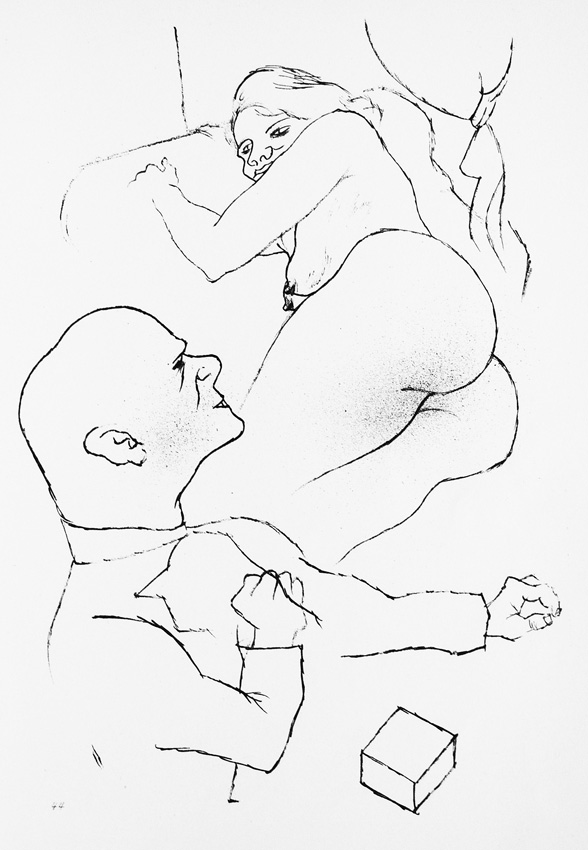 |
|
|
|
Dr. S. und Frau / Docter S. and Wife - (Duckers S1-44, Davis-Rifkind 952: 44). Offset lithograph for Ecce Homo, 1921. Our impression is from the unsigned Ausgabe C of the first edition of Ecce Homo (Berlin, 1923). Illustrated in Hess, plate 76. Image size: 283x194mm. Price: Please call or email for current pricing information.
|
|
|
|
|
|
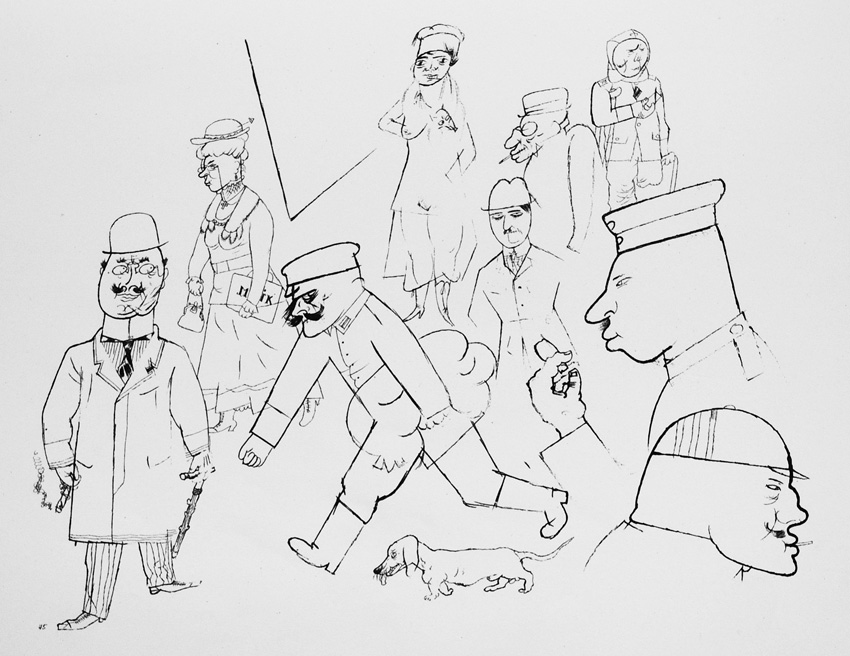 |
|
|
Nach Ladenschluss / After the Shops Close (Duckers S1-45, Davis-Rifkind 952: 45). Offset lithograph for Ecce Homo, 1922. Our impression is from the unsigned Ausgabe C of the first edition of Ecce Homo (Berlin, 1923). In the 1966 Grove edition, this work is titled "Evening Rush Hour." Illustrated in Hess, pl. 93. Image size: 207x267mm. Price: Please call or email for current pricing information.
|
|
|
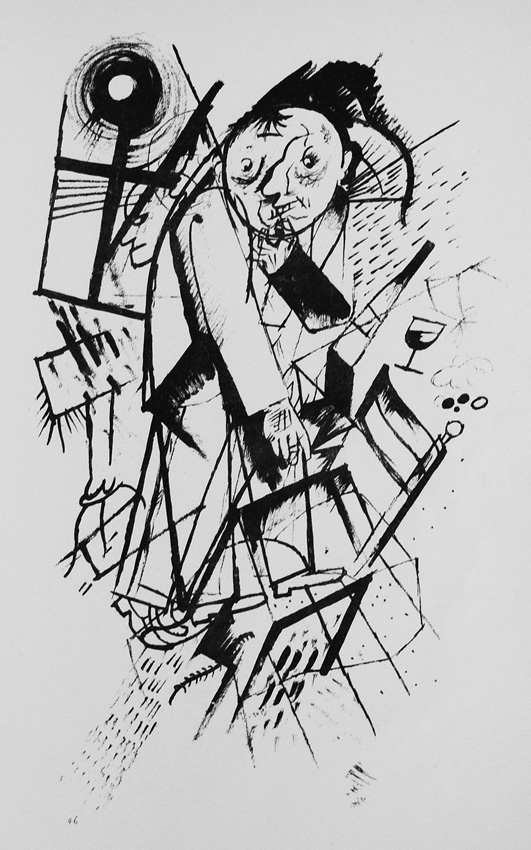 |
|
|
Franz_Jung gewidmet / Dedicated to Hans Jung (Duckers S1-46, Davis-Rifkind 952: 46). Offset lithograph for Ecce Homo, 1917. Our impression is from the unsigned Ausgabe C of the first edition of Ecce Homo (Berlin, 1923). Franz Jung (1888-1963) was probably the major left-wing writer in Weimar Germany and was involved in the DADA movement. Grosz provided illustrations for two of his books. Image size: 279x169mm. Price: Please call or email for current pricing information.
|
|
|
|
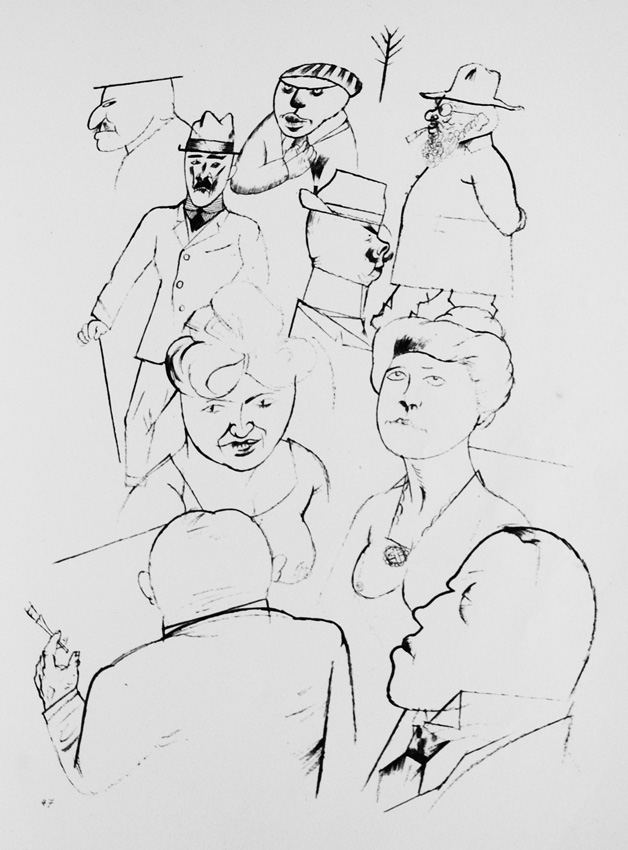 |
|
Heimatliche Gestalten / Hometown Figures (Duckers S1-47, Davis-Rifkind 952: 47). Offset lithograph for Ecce Homo, 1921. Our impression is from the unsigned Ausgabe C of the first edition of Ecce Homo (Berlin, 1923). Image size: 269x197mm. Price: Please call or email for current pricing information.
|
|
|
|
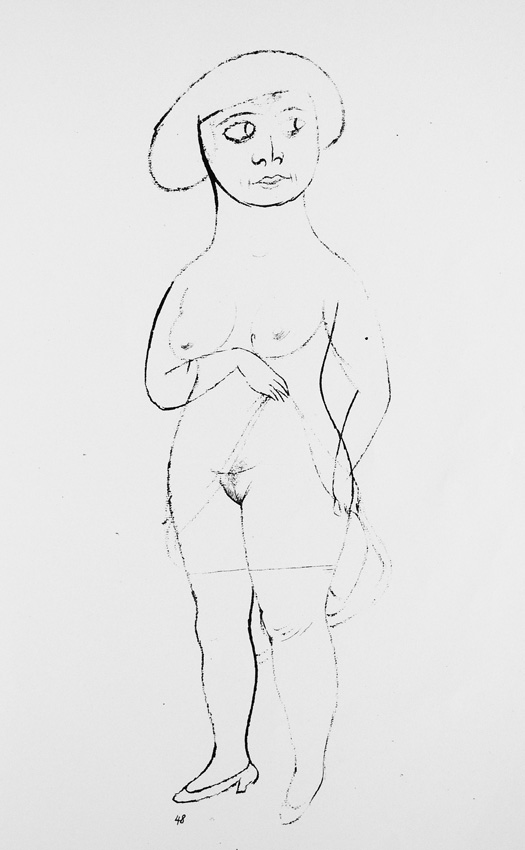 |
|
Kommerzienrats Töchterlein / The Industrialist's Dear Little Daughter (Duckers S1-48, Davis-Rifkind 952: 48). Offset lithograph for Ecce Homo, 1921. Our impression is from the unsigned Ausgabe C of the first edition of Ecce Homo (Berlin, 1923). Image size: 278x87mm. Price: Please call or email for current pricing information.
|
|
|
|
|
|
|
|
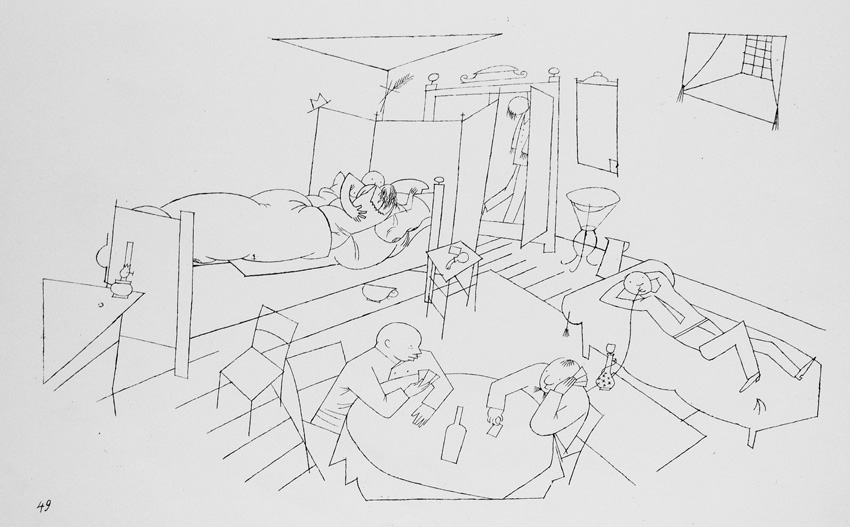 |
|
|
Quergebaude vier Treppen / TenementFour Flights Up (Duckers S1-49, Davis-Rifkind 952: 49). Offset lithograph for Ecce Homo, 1922. Our impression is from the unsigned Ausgabe C of the first edition of Ecce Homo (Berlin, 1923). Illustrated in Hess, plate 40, under the title, On the 4th floor. Image size: 166x280mm. Price: Please call or email for current pricing information.
|
|
|
|
|
|
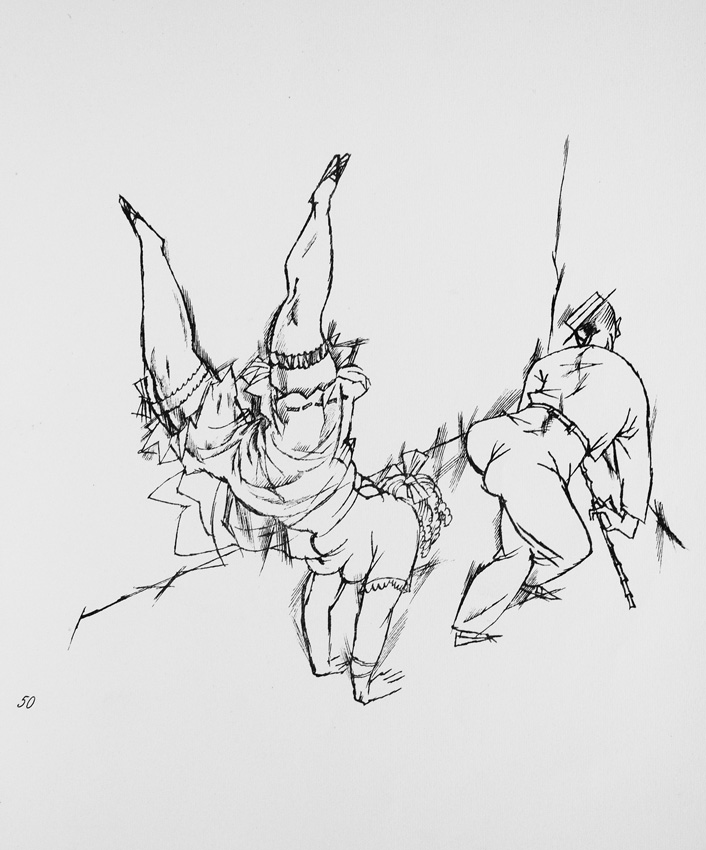 |
|
Akrobaten / Acrobats (Duckers S1-50, Davis-Rifkind 952: 50). Offset lithograph for Ecce Homo, 1915. Our impression is from the unsigned Ausgabe C of the first edition of Ecce Homo (Berlin, 1923). Image size: 180x198mm. Price: Please call or email for current pricing information.
|
|
|
|
|
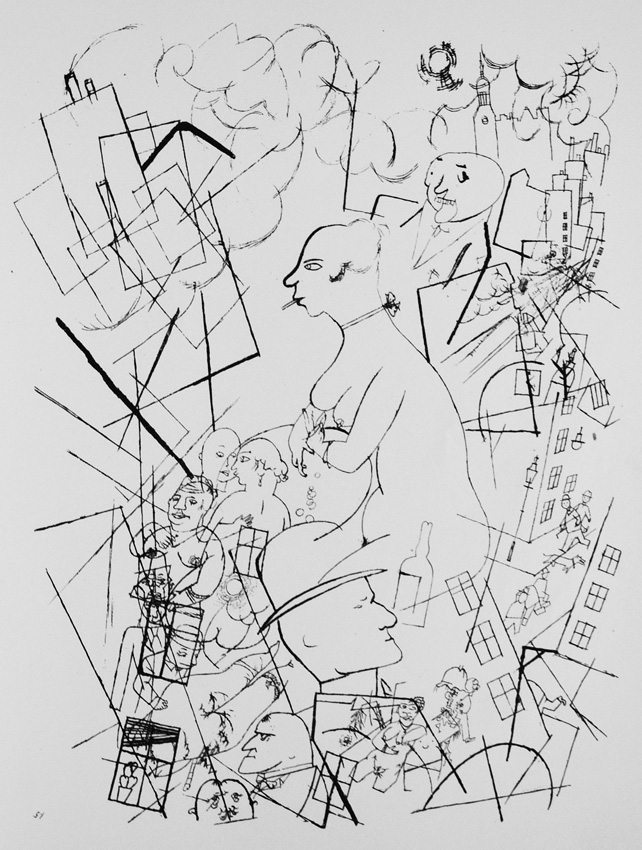 |
|
Eva (Duckers S1-51, Davis-Rifkind 952: 51). Offset lithograph for Ecce Homo, 1918. Our impression is from the unsigned Ausgabe C of the first edition of Ecce Homo (Berlin, 1923). Image size: 275x206mm. Price: Please call or email for current pricing information.
|
|
|
|
|
Spaightwood Galleries, Inc.
To purchase, call us at 1-800-809-3343 (1-508-529-2511 in Upton MA & vicinity) or send an email to spaightwood@gmail.com.
We accept AmericanExpress, DiscoverCard, MasterCard, and Visa.
We also accept wire transfers and paypal.
For directions and visiting information, please call. We are, of course, always available over the web and by telephone (see above for contact information). Click the following for links to past shows and artists. For a visual tour of the gallery, please click here. For information about Andy Weiner and Sonja Hansard-Weiner, please click here. For a list of special offers currently available, see Specials.
All works are sold with an unconditional guarantee of authenticity (as described in our website listing).
Copyright 2004-2017, Spaightwood Galleries, Inc.
Go back to the top of this page.
Visiting hours: Saturday 10:00 am to 5:00 pm and Sunday noon to 6:00 pm and other times by arrangement.
Please call to confirm your visit. Browsers and guests are welcome.
|
|
|
|
|
|
|
|
|
|
|
|
|
|
|
|
|
|
|
|
|
|
|
|
|
|
|
|
|
|
|
|
|
|
|









